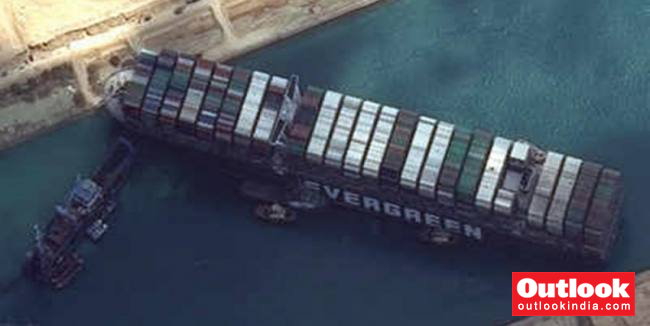Salvage teams on Monday set free a colossal container ship that has halted global trade through the Suez Canal, bringing an end to a crisis that for nearly a week had clogged one of the world’s most vital maritime arteries.
On Tuesday, the prices of crude oil had gone up after the canal was blocked. According to Reuters, Brent crude was down by $1 per barrel to $63.67.
A human-made waterway, the Suez Canal is one of the world’s most heavily used shipping lanes, carrying over 12 per cent of world trade by volume. The traffic jam caused by the blockage had held up an estimated $9.6bn of goods every day, and trading companies were forced to reroute ships.
Built in 1869, the canal provides a major shortcut for ships moving between Europe and Asia, which before its construction had to sail around Africa to complete the same journey.
How the Ever Given was freed?
Helped by the peak of high tide, a flotilla of tugboats managed to wrench the bulbous bow of the skyscraper-sized Ever Given from the canal’s sandy bank, where it had been firmly lodged since last Tuesday.
After hauling the fully laden 220,000-ton vessel over the canal bank, the salvage team was pulling the vessel toward the Great Bitter Lake, a wide stretch of water halfway between the north and south end of the canal, where the ship will undergo technical inspection, canal authorities said.
The rescue efforts received a major boost at night time due to tides swelling up the canal’s water level and allowing the Ever Given to regain buoyancy, a New York Times report said. To ease its weight, officials on Sunday were preparing to move some of the cargo vessel’s 20,000-odd containers.
Ship was moving from shoreline toward the center of the artery
Satellite data from MarineTraffic.com confirmed that the ship was moving away from the shoreline toward the center of the artery.
Video released by the Suez Canal Authority showed the Ever Given being escorted by the tugboats that helped free it, each sounding off their horns in jubilation after nearly a week of chaos.
“We pulled it off!” said Peter Berdowski, CEO of Boskalis, the salvage firm hired to extract the Ever Given, in a statement. “I am excited to announce that our team of experts, working in close collaboration with the Suez Canal Authority, successfully refloated the Ever Given … thereby making free passage through the Suez Canal possible again.”
Traffic was impacted
The obstruction has created a massive traffic jam in the vital passage, holding up $9 billion each day in global trade and straining supply chains already burdened by the coronavirus pandemic.
It remained unclear when traffic through the canal would return to normal. At least 367 vessels, carrying everything from crude oil to cattle, have piled up on either end of the canal, waiting to pass.
Data firm Refinitiv estimated it could take more than 10 days to clear the backlog of ships. Meanwhile, dozens of vessels have opted for the alternate route around the Cape of Good Hope at Africa’s southern tip — a 5,000-kilometer (3,100-mile) detour that adds some two weeks to journeys and costs ships hundreds of thousands of dollars in fuel and other costs.
The freeing of the vessel came after dredgers vacuumed up sand and mud from the vessel’s bow and 10 tugboats pushed and pulled the vessel for five days, managing to partially refloat it at dawn.
It wasn’t clear whether the Ever Given, a Panama-flagged, Japanese-owned ship hauling goods from Asia to Europe, would continue to its original destination of Rotterdam or if it would need to enter another port for repairs.
Ship operators did not offer a timeline for the reopening of the crucial canal, which carries over 10 per cent of global trade, including 7 per cent of the world’s oil. Over 19,000 ships passed through last year, according to canal authorities.
Supply of these products was delayed
Millions of barrels of oil and liquified natural gas flow through the artery from the Persian Gulf to Europe and North America. Goods made in China — furniture, clothes, supermarket basics — bound for Europe also must go through the canal, or else take the detour around Africa.
The unprecedented shutdown had threatened to disrupt oil and gas shipments to Europe from the Middle East and raised fears of extended delays, goods shortages and rising costs for consumers.
The salvage operation successfully relied on tugs and dredgers alone, allowing authorities to avoid the far more complex and lengthy task of lightening the vessel by offloading its 20,000 containers.
With inputs from agencies
For in-depth, objective and more importantly balanced journalism, Click here to subscribe to Outlook Magazine
This article is auto-generated by Algorithm Source: www.outlookindia.com


